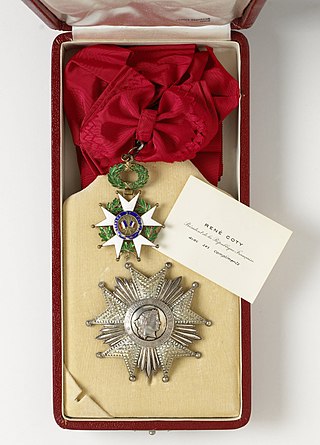
The National Order of the Legion of Honour, formerly the Imperial Order of the Legion of Honour, is the highest French order of merit, both military and civil, and currently comprises five classes. Established in 1802 by Napoleon Bonaparte, it has been retained by all later French governments and regimes.

Jacques-Antoine-Hippolyte, Comte de Guibert was a French general and military writer. Born at Montauban, he accompanied his father in wars before he became a general himself. In 1770, he published an essay on tactics which was very influential in his time.

The Battle of Rossbach took place on 5 November 1757 during the Third Silesian War near the village of Rossbach (Roßbach), in the Electorate of Saxony. It is sometimes called the Battle of, or at, Reichardtswerben, after a different nearby town. In this 90-minute battle, Frederick the Great, king of Prussia, defeated an Allied army composed of French forces augmented by a contingent of the Reichsarmee of the Holy Roman Empire. The French and Imperial army included 41,110 men, opposing a considerably smaller Prussian force of 22,000. Despite overwhelming odds, Frederick managed to defeat the Imperials and the French.

Numa Denis Fustel de Coulanges was a French historian. Joseph M. McCarthy argues that his first great book, The Ancient City (1864), was based on his in-depth knowledge of the primary Greek and Latin texts. The book argued that:

Oskar Emil von Hutier was a German general during the First World War. He served in the German Army from 1875 to 1919, including war service.

The Place Vendôme, earlier known as the Place Louis-le-Grand, and also as the Place Internationale, is a square in the 1st arrondissement of Paris, France, located to the north of the Tuileries Gardens and east of the Église de la Madeleine. It is the starting point of the Rue de la Paix. Its regular architecture by Jules Hardouin-Mansart and pedimented screens canted across the corners give the rectangular Place Vendôme the aspect of an octagon. The original Vendôme Column at the centre of the square was erected by Napoleon I to commemorate the Battle of Austerlitz; it was torn down on 16 May 1871, by decree of the Paris Commune, but subsequently re-erected and remains a prominent feature on the square today.
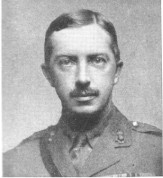
Douglas Reynolds VC was an English recipient of the Victoria Cross, the highest and most prestigious award for gallantry in the face of the enemy that can be awarded to British and Commonwealth forces.
The Battle of Madonna dell'Olmo or Battle of Cuneo was fought on the outskirts of Cuneo on 30 September 1744, in the War of the Austrian Succession. The battle ended in a victory for the armies of Spain and France over the Kingdom of Sardinia but it did not advance the victors' campaign.

The Rue de la Paix is a fashionable shopping street in the centre of Paris. Located in the 2nd arrondissement, running north from Place Vendôme and ending at the Opéra Garnier, it is best known for its jewellers, such as the shop opened by Cartier in 1898. Charles Frederick Worth was the first to open a couture house in the Rue de la Paix. Many buildings on the street are inspired in design by the hôtels particuliers of Place Vendôme.
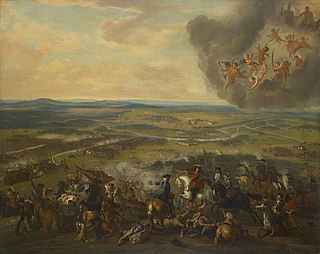
The Battle of Cassano took place on 16 August 1705, during the War of the Spanish Succession, near Cassano d'Adda, in Lombardy, Italy. It was fought between a French army of 22,000 commanded by the duc de Vendôme and an Imperial force of 24,000 under Prince Eugene of Savoy.

Philippe, Grand Prior of Vendôme (1655–1727) was a French general, a grand prior of France in the order of Malta, as well as an epicurian and a libertine.
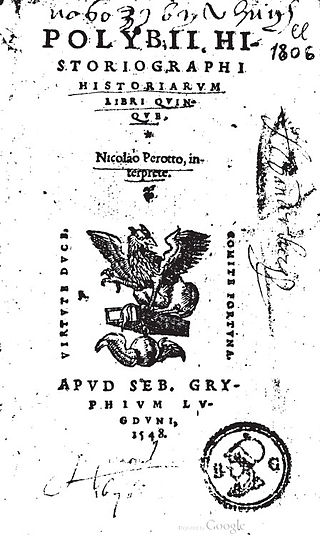
Polybius' Histories were originally written in 40 volumes, only the first five of which are extant in their entirety. The bulk of the work was passed down through collections of excerpts kept in libraries in the Byzantine Empire. Polybius, a historian from the Greek city of Megalopolis in Arcadia, was taken as a hostage to Rome after the Roman victory in the Third Macedonian War, and there he began to write an account of the rise of Rome to a great power.
Coup d'œil is a term taken from French, that more or less corresponds to the words glimpse or glance in English. The literal meaning is "stroke of [the] eye".
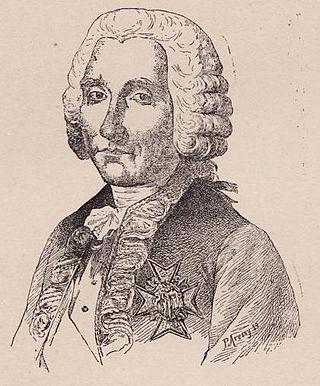
Pierre-Joseph Bourcet was a French tactician, general, chief of staff, mapmaker and military educator. He was the son of Daniel-André Bourcet and of Marie-Magdeleine Legier.
Arthur Dillon, Count Dillon (1670–1733) was a Jacobite soldier from Ireland who served as colonel of Dillon's Regiment in the Irish Brigade in French service. He fought in the Nine Years' War and in the War of the Spanish Succession where he excelled at the Battle of Cremona against Prince Eugene of Savoy.
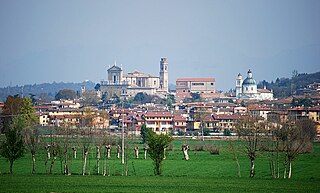
The Battle of Castiglione took place near Castiglione delle Stiviere in Lombardy, Italy on 8 September 1706 during the War of the Spanish Succession. A French army of 12,000 attacked a Hessian corps of 10,000 that was besieging the town and forced them to retreat with heavy losses.

Adrien Louis Marie Alibert, known as Louis Alibert was a French linguist, born on October 12, 1884, in Bram in the Aude and died on April 16, 1959, in Montpellier. He specialized in Occitan and Languedocien. He is also the initiator of the classical standard of Occitan, adopted by the Institute of Occitan Studies (IEO) in 1945.
Léon Amédée François Raffenel (1856-1914) was a general of the French army. Enlisting into the army in 1875 he quickly rose through the ranks and was accepted into the Ecole Spéciale Militaire de Saint-Cyr in 1876. He saw extensive active service with the French colonial army in the Pacification of Tonkin between 1887 and 1892, being cited in the order of the day for his adept command of columns of native infantry. Having married in 1893 Raffenel requested transfer to the France-based metropolitan army in 1894. This unusual move was complicated by the separate organisation of the two French armies but was approved by presidential decree. Raffenel spent 16 years in the metropolitan army and commanded the 27th Infantry Regiment and the elite 82nd Light Infantry Brigade. He was promoted to général de brigade in 1911 and received command of the 3rd Colonial Infantry Division, one of the finest divisions of the French Army. He fought with this unit at the Battle of Rossignol on 22 August 1914 and was killed in action in what was a heavy defeat for the French troops.
Lucius Anicius Gallus was a Roman senator and military commander. He led the conquest of Illyria during the Third Macedonian War.

The Convention of Milan, signed on 13 March 1707 during the War of the Spanish Succession, was an agreement between France and Austria which ended the fighting in Northern Italy. The French were allowed to withdraw their remaining forces undisturbed and in return handed control of any towns they still held to the Austrian commander Prince Eugene of Savoy.


















